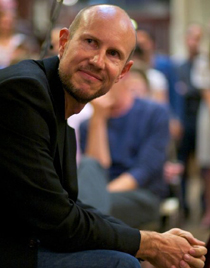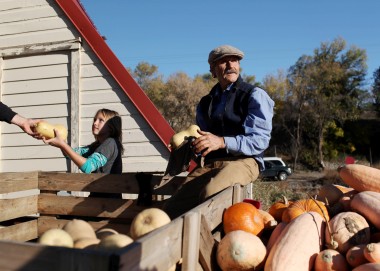Tag: Web/mobile content
New metasite showcases Localore projects
The Association of Independents in Radio will launch a metasite April 22 that combines its 10 Localore multimedia projects on a single ...Nine media projects receive Latino Public Broadcasting funding
Media projects backed during LPB's latest grant round include Children of Giant, Hector Galan's documentary exploring how production of the epic feature film Giant affected ...With Digital Studios, PBS tailors programs for a web-only audience
In a bid to attract younger viewers who don't tune in to broadcast TV, PBS Digital Studios has cultivated a slate of ...Pubradio and TV audiences continue migration to digital, State of News Media study shows
Audiences for public radio and television news continue to spend less time with legacy broadcast platforms as they transition to digital listening ...Wide-open market for podcasters: programs that feature, and appeal to, women
AUSTIN, Texas — When podcasting stars gathered March 11 at the South by Southwest Interactive conference to discuss the challenges facing their ...The name needs revamping, but podcasts are here to stay
If you’re a public radio station without a plan for how to take advantage of the remarkably flexible and creative platform of ...PBS pushes message of digital innovation at SXSW
During a March 10 appearance at the South by Southwest Interactive conference, PBS President Paula Kerger talked the talk of digital innovation, ...Pubmedia-funded start-up accelerator Matter announces inaugural class
The first start-up class of Matter, the media accelerator backed by Knight Foundation, KQED and the Public Radio Exchange, includes Localore partner ...Looking to get in listeners’ pockets
A growing number of public radio stations can now be found on mobile devices, their signature icons wedged between Angry Birds and ...More than airtime: Documentary producers search for new frontiers of engaging audiences
During a conference at the U.S. Institute of Peace Feb. 28, the makers of human rights documentaries discussed the techniques and challenges ...Company claiming patent infringement targets podcasters
Personal Audio says it has a patent covering the technology used in podcasting. A representative for the company said no public broadcasters ...Pubradio journalist wants western Colorado to ‘See Change’
For a Localore project hosted by KVNF in Paonia, Colo., Julia Kumari Drapkin set out to invert the traditional model of science ...Wednesday forum to explore public media arts coverage
The latest in an ongoing series of Public Media Futures forums will spotlight public broadcasting’s work surrounding the arts. The Feb. 20 ...KCRW and McSweeney’s partner up for The Organist
KCRW in Santa Monica, Calif., has struck the opening chords for The Organist, a monthly arts-and-culture podcast from McSweeney’s. The program is the latest ...Latitude News meets Kickstarter goal to fund new weekly podcast
Latitude News, an online news outlet exploring world events and their reverberating effects in local U.S. communities and vice versa, surpassed the ...









